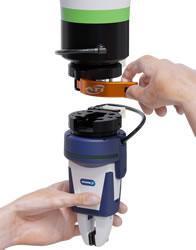With the rising enhancement in technology, the autonomous car industry is flourishing day-by-day. Along with the behemoths in the automobile sector, various tech firms in the industry are brainstorming to launch their autonomous cars.
 Where Is The Industry Leading In Terms Of Autonomous Car Tech?
Where Is The Industry Leading In Terms Of Autonomous Car Tech?

Vaibhav Bhosale | Zion Market Research
With the rising enhancement in technology, the autonomous car industry is flourishing day-by-day. Along with the behemoths in the automobile sector, various tech firms in the industry (such as Google and Uber to name a few) are brainstorming to launch their autonomous cars. With so many players gambling on the self-driving car tech, one question stays to be unanswered: When will we be witnessing the fully self-driving cars in the industry?
Well, so far, all the players who are occupied in launching their autonomous cars are on the verge of completing their masterpiece. And when it comes to launching a self-driving car, things should not be hurried. Autonomous cars are a combination of a plethora of sensors to evaluate their surroundings. These sensors include lidar, radar, GPS, sonar, and odometry. With such a vast number of sensors to be operated with, it is better to take things slow.
The Advent of Autonomous Car Tech
Even though the concept of self-driving cars seems too real to be true for some of you in the present era, the idea has been mulled over since the era of Leonardo do Vinci. Yes! Vinci was the first to propose a self-propelling cart early in the 1500s. Jumping back to the 21st century, in 2004 DARPA (the research division of US Department of Defense) sponsored a contest to enhance the autonomous tech. The competition challenged the vehicles to travel a 150-mile desert road. Even though none of the participants were able to complete the task, the competition played a major role in the advancement of the self-driving car tech.
Later, the 2007-competition challenged the participants to drive the vehicles autonomously on a 60-mile urban road. Only four vehicles were able to complete the task in the given time limit of 6 hours. Later, 2015 was the year when the autonomous car sector saw the dream converting into a reality with Tesla’s “Autopilot” feature. The company made a ground-breaking invention by offering the feature to Model S owners simply by a software update.
The Innovations and the Potential of the Autonomous Car Tech
To begin on with the innovations in the autonomous car tech, we need to first clear some basics about the levels in autonomous tech. There are overall 6 levels in autonomous cars tech.
-
Level 0: Level 0 cars have no driving automation. Hence, most of the cars that we see today on roads are level 0 cars and are controlled manually.
-
Level 1: Level 1 cars have driver assistance. This is the most basic level of automation that a car can get. The car has one automated system for driver assistance, such as accelerating or steering.
-
Level 2: Level 2 cars have partial driving automation or advanced driver assistance systems (ADAS). The cars can control both steering and accelerating or decelerating.
-
Level 3: Level 3 cars have conditional driving automation. These cars have environmental detection abilities and hence can make informed choices for themselves.
-
Level 4: Level 4 cars have high driving automation. These cars can work in self-driving mode but are restricted due to infrastructure and legislation.
-
Level 5: Level 5 cars have full driving automation. These cars do not require any human intervention.
Now that we are aware of the levels in the autonomous car tech, it is clear that most of the major players in the sector are stuck in level 3 while a handful of them have entered into level 4.
Considering the pace of development, it is certain that the world will not see completely autonomous cars for the coming decade or so. But, you never know. Due to rising tech features being added to cars, odds are high that there might be alterations to the number of levels in the autonomous car tech.
The Challenges
While tech is helping us to achieve the dream of fully autonomous cars, it is the same tech that is hindering the development. There are a few challenges that need to be dealt with before autonomous vehicles become widespread.
One of the major issues is trust or dependency. Mankind depends extremely and trusts blindly on these new vehicles. And history is the evidence! When the concept of airbags became widespread, the passengers and drivers in the 1990s took this as the permit for not wearing their seatbelts. People at the time thought it was redundant wearing seatbelts.
In the same manner, it is possible that autonomous car tech will make drivers dependable and result in the situation going out of control. In addition to this, a recent study has shown that drivers who trust too much on autonomous car tech end up smashing into stationary objects or cars. And since the autonomous car tech is presently at level 3, the capabilities of the tech are therefore limited and hence cannot be trusted fully.
In addition to this, users’ safety is a major concern in today’s world. Experts are concerned that level 3 cars might push the drives to opt for activities such as texting or reading. This might result in a lack of needed awareness when time comes to control the car. Hence, automotive firms should design a better interface between humans and cars to make sure that the new tech saves lives instead of adding up more to accidents.
The Current Players and Their Contribution
With a number of companies making noteworthy development and contribution in the self-driving car industry, a few firms have come into limelight due to their achievement. These firms have implemented the tech for different purposes such as transportation and delivery. For example, Amazon is currently testing its autonomous package delivery system and is already in the phase of implementing it soon.
In addition to this, the Cupertino-based tech behemoth Apple has also entered into the game. It has built an employee transportation network and presently has 66 self-driving vehicles live in California. Moreover, in order to power its self-driving efforts, the firm acquired Drive.ai earlier their year in June. Speaking of which, BMW, Intel, and Mobileye earlier joined hands in order to drive their autonomous efforts. The alliance earlier showcased their autonomous car concept at CES 2016. It claims to launch a self-driving car by the end of 2021. And last year, the alliance started its second autonomous driving campus in Munich.
To add more to the list, GM earlier joined hands with Lyft and Honda and spent billions in the cruise automation department. Furthermore, Honda is also claimed to be offering semi-autonomous tech to its Civic model. In addition to this, Hyundai also declared to offer affordable driver-assistance tech and plans to launch its self-driving cars by 2025.
Jaguar Land Rover also claimed that it focusing on drive assist. This led the firm to join hands Waymo to develop self-driving vehicles. Also, Nissan/Renault is in the process of testing self-driving taxis and promises noteworthy autonomous cars by the end of 2020. Lastly, Uber earlier appointed engineers to work on autonomous tech.
In a nutshell, it seems that autonomous car tech is advancing at a rapid speed and soon the time will come upon us (in a decade or so) when we will witness fully autonomous cars on roads.

About Vaibhav Bhosale
Vaibhav follows a 4-year of experience as a Content Writer at a couple of organizations. His immense interest in reading brought him in the world of content writing. He loves to eat and explore new places.
The content & opinions in this article are the author’s and do not necessarily represent the views of RoboticsTomorrow
Comments (0)
This post does not have any comments. Be the first to leave a comment below.
Featured Product

